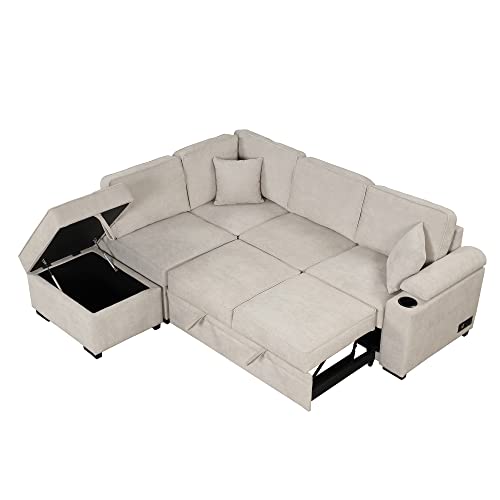The M5Stack Cardputer is a versatile and compact development board designed for a wide array of applications. This highly effective device, outfitted with a rich set of features, opens up numerous programming possibilities for hobbyists and professionals alike. In this article, we’ll delve into the varied programming options available for the M5Stack Cardputer and explore how these options may be leveraged to convey progressive projects to life.
1. Introduction to M5Stack Cardputer
The M5Stack Cardputer is part of the M5Stack ecosystem, known for its modular, stackable, and consumer-friendly development boards. It contains a compact design with an ESP32 microcontroller, an integrated touchscreen display, and various enter/output options. The Cardputer’s form factor makes it splendid for portable applications, and its capabilities extend to a range of programming environments, making it a flexible tool for developers.
2. Programming with Arduino IDE
Probably the most popular programming environments for the M5Stack Cardputer is the Arduino IDE. Arduino provides a consumer-friendly interface and a vast library of pre-written code, making it accessible even to beginners. To get started with Arduino IDE:
– Install the Arduino IDE: Download and set up the Arduino IDE from the official website.
– Add M5Stack Board Help: Open the Arduino IDE, go to `File` > `Preferences`, and add the M5Stack board URL to the `Additional Boards Manager URLs` field. Then, navigate to `Tools` > `Board` > `Boards Manager` and seek for “M5Stack.” Set up the M5Stack board package.
– Write and Upload Code: Write your code using the provided M5Stack libraries and examples. Upload your code to the Cardputer through USB, and monitor its performance using the serial monitor.
Arduino’s intensive library help and community-pushed examples make it an incredible starting level for these new to the M5Stack Cardputer.
3. Programming with PlatformIO
PlatformIO is another sturdy development environment compatible with the M5Stack Cardputer. It is an open-source ecosystem that integrates with varied IDEs like Visual Studio Code and Atom. PlatformIO gives advanced options like project management, library management, and a unified build system. To use PlatformIO:
– Install PlatformIO: Set up the PlatformIO extension for Visual Studio Code or Atom.
– Create a New Project: Start a new project in PlatformIO, selecting the M5Stack board as your target platform.
– Write Code: Utilize PlatformIO’s library manager to incorporate crucial libraries and write your code. PlatformIO’s features like dependency management and debugging tools enhance the development experience.
– Build and Upload: Build your project and upload the code to the Cardputer utilizing the integrated tools in PlatformIO.
PlatformIO is favored for its professional-grade features and compatibility with a number of IDEs, making it a powerful selection for more advanced projects.
4. MicroPython Programming
For those who prefer Python, MicroPython affords a powerful alternative for programming the M5Stack Cardputer. MicroPython is a lean implementation of Python designed to run on microcontrollers. To get started with MicroPython:
– Install MicroPython Firmware: Download the MicroPython firmware for the ESP32 and flash it onto the Cardputer using tools like esptool.
– Set Up a Development Environment: Use a serial terminal or an IDE like Thonny or uPyCraft to work together with the MicroPython REPL (Read-Eval-Print Loop).
– Write Python Code: Write Python scripts to control the Cardputer’s features. MicroPython’s simplicity and ease of use make it a superb choice for speedy prototyping and academic purposes.
– Upload and Test Code: Transfer your Python scripts to the Cardputer and test them in real-time.
MicroPython’s ease of use and readability make it a popular choice for Python enthusiasts.
5. Using Blockly for Visual Programming
Blockly, a visual programming language developed by Google, is one other option for programming the M5Stack Cardputer. It provides a drag-and-drop interface that simplifies programming, particularly for rookies and academic contexts. To use Blockly:
– Access Blockly Environment: Utilize a web based Blockly editor or a particular Blockly platform suitable with M5Stack.
– Create Programs: Drag and drop blocks to create your program logic. Blockly’s visual approach helps customers understand programming concepts without needing to write code.
– Deploy Code: Convert the Blockly code into a format that may be uploaded to the Cardputer.
Blockly’s visual nature makes it an excellent tool for teaching programming ideas and growing easy applications.
6. Conclusion
The M5Stack Cardputer is a versatile development board that helps a range of programming environments, from the Arduino IDE and PlatformIO to MicroPython and Blockly. Each programming option offers unique advantages, catering to different skill levels and project requirements. By exploring these programming options, builders can leverage the M5Stack Cardputer’s full potential, creating innovative and functional applications across various domains. Whether you’re a novice programmer or an skilled developer, the M5Stack Cardputer provides the tools and flexibility needed to convey your concepts to life.
If you liked this article and also you would like to obtain more info pertaining to M5Stack cardputer kit i implore you to visit our web-page.














